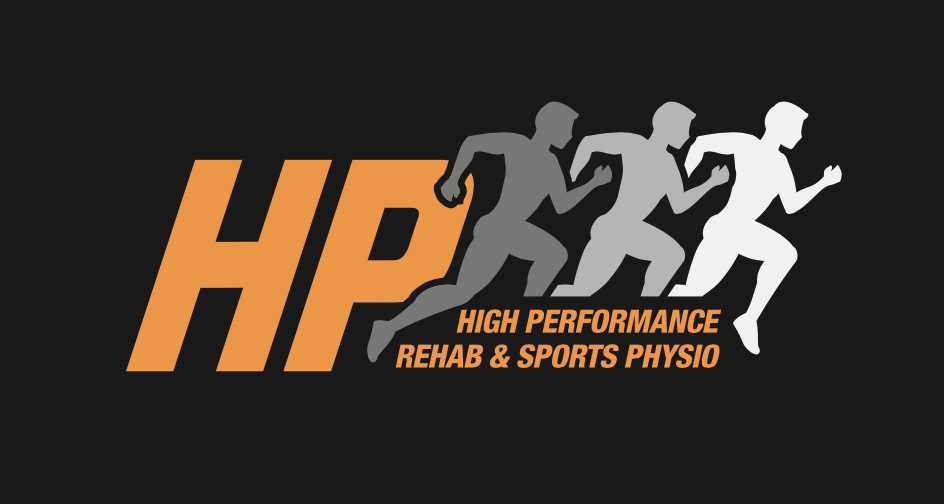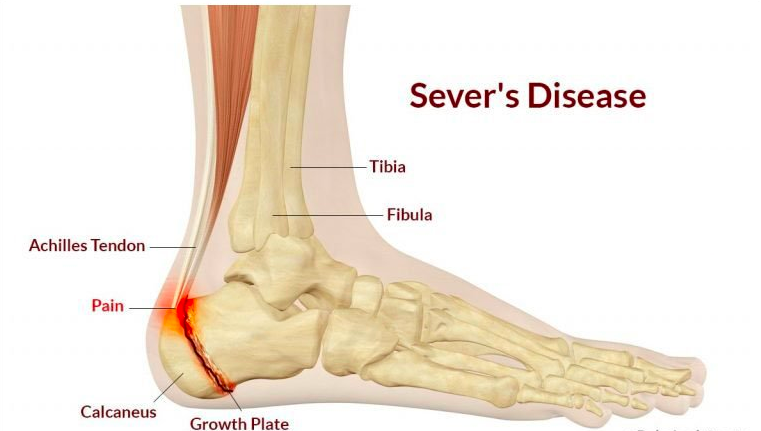Severs disease is a common cause of heel pain in young girls and boys. It is also known as calcaneal apophysitis – where a skeletally immature bone has a growth plate which becomes irritated from excessive sports and activity.
Causes
The Achilles tendon inserts into the heel/calcaneus and puts repetitive strain on the growth plate in the heel. The relatively soft growth plate becomes irritated from excessive forces from sport and activity.
This condition often coincides with the growth spurt and/or sudden increase in sports related activity. During the early adolescent growth spurt, bone growth exceeds the ability of the muscle-tendon unit stretch. This results in a tight calf-Achilles muscle-tendon unit, causing increased tension on the growth plate with activity and sport.
Other contributing factors include:
· Tight calf-Achilles muscle-tendon complex
· Weak calf muscles
· Poorly cushioned shoes / worn out shoes
· Running on hard surfaces
· Excessive foot biomechanics – over-pronation or over-supination
What Age Severs Occur?
Severs occurs during a period of rapid growth in active adolescence:
· Girls – median age of 11 (8-13 years old for girls).
· Boys – median age of 12 (10-15 years old for boys).
Severs Disease Symptoms
Typical presentation includes an active adolescent with either unilateral or bilateral heel pain that gets worse with activity or sore after activity. Symptoms often coincides with a recent growth spurt and also an increase in training loads. There is no mechanism of injury and symptoms gradually come on.
Symptoms can progress if they are not rested, which may limit activity such as running, jumping and at its worst walking.
Diagnosis
Correct diagnosis of symptoms can be completed by one of our trained physiotherapists. This can also be done by a Sports Doctor or GP.
On examination the patients can have pain on walking, running, jumping, hopping, calf raise and walking on toes. They often get pain on stretching their calf muscle and will often have reduced ankle ROM (knee to wall test). They will have tenderness on their posterior calcaneus (heel) where the Achilles tendon inserts and squeezing the heel posteriorly (squeeze test), will reproduce the patient’s symptoms.
Further Investigations
Severs disease is a clinical diagnosis and imaging is usually not required. If presentation is atypical with severe or persistent pain referral to a doctor would be wise to rule out other less causes of heel pain.
Treatment / Management
Severs is a self-limiting condition that resolves with skeletal maturation and growth plate closure. Treatment and management should be directed and progressed by one of our trained physiotherapists, as they can safely introduce and progress rehab accordingly. The main treatment / management options are:
· Pain Management –
o Rest from aggravating activities
o Ice application
o Anti-inflammatories as prescribed by doctor / pharmacist
o Anti-inflammatory gel (Voltaren gel) – as prescribed doctor / pharmacist
o Use of heel cups / pads to off-load symptoms
o If unable to weight-bear and walk – a period of immobilisation (in a boot) or non-weight-bearing (on crutches) to allow pain to reduce before walking pain free again.
· Rehabilitation – Must be progressive and planned appropriately:
o Ankle ROM exercises (calf stretches) to increase the ROM of the ankle joint
o Strengthening of calf muscle
o Plyometric training
o Rehab running
· Load Management – managing how much sports / activities are completed letting pain be the guide. One of our trained physiotherapists have experience in planning and periodising running loads here.
· Footwear – must be well maintained and up-to-date.
Prognosis
Symptoms can last for 6-12 months and recurrence is common. Symptoms are expected to resolve when there is closure of the growth plate and skeletal maturation. Treatment and management options above are usually reasonably successful with no long-term complications with prognosis being excellent.

